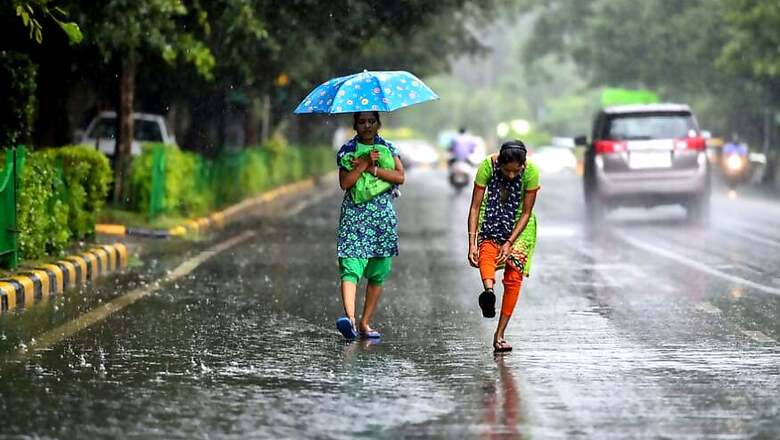
views
Delhi: Delhi is likely to witness rains in the next three to four days, with the axis of monsoon trough shifting towards north, the weather department said on Friday.
One or two spells of intense rains are also predicted on Monday and Tuesday.
"At present, the axis of monsoon trough lies south of Delhi. It is gradually moving towards north. Also, a low pressure area is developing over the Bay of Bengal. It will enhance rains over Delhi, Punjab, Haryana, Jharkhand, Bihar and Uttar Pradesh," Mahesh Palawat of Skymet Weather said.
"Light rains are likely in Delhi on Saturday and Sunday. On Monday and Tuesday, moderate rains along with one or two intense spells are predicted," he said.
The city has not witnessed a single spell of heavy rains this monsoon season. Though the IMD had issued an alert for intense showers on July 25 and 26, vast stretches of the city remained dry.
Another prediction of heavy rainfall at isolated places in the city on August 1 went the opposite way.
On July 22, the Safdarjung observatory recorded 50.2 mm rainfall, the heaviest in the monsoon season this year. The weather station at Palam gauged 61 mm precipitation on July 18.
More than 65 mm precipitation at any place is considered heavy rain. Palawat said a combination of weather systems leads to heavy showers.
"Heavy rains take place when a western disturbance, cyclonic circulation, easterly winds from the Bay of Bengal or southwesterly winds from the Arabian Sea combine with the monsoon trough," he explained.
On Friday, large swathes of Delhi reeled under sultry weather though a few places recorded light rains. The city recorded a high of 34.6 degrees Celsius, a notch above the normal, and a low of 28.3 degrees Celsius. Humidity levels oscillated between 62 and 85 per cent.
Delhi recorded 199.2 mm rains in July, which is 5 per cent less than the 30-year average of 210.6 mm. No rainfall has occurred in August so far.
Overall, it has received 210.4 mm precipitation against the long-term average of 295.6 mm since June 1, when the monsoon season starts, a deficiency of around 29 per cent, IMD data showed.

















Comments
0 comment